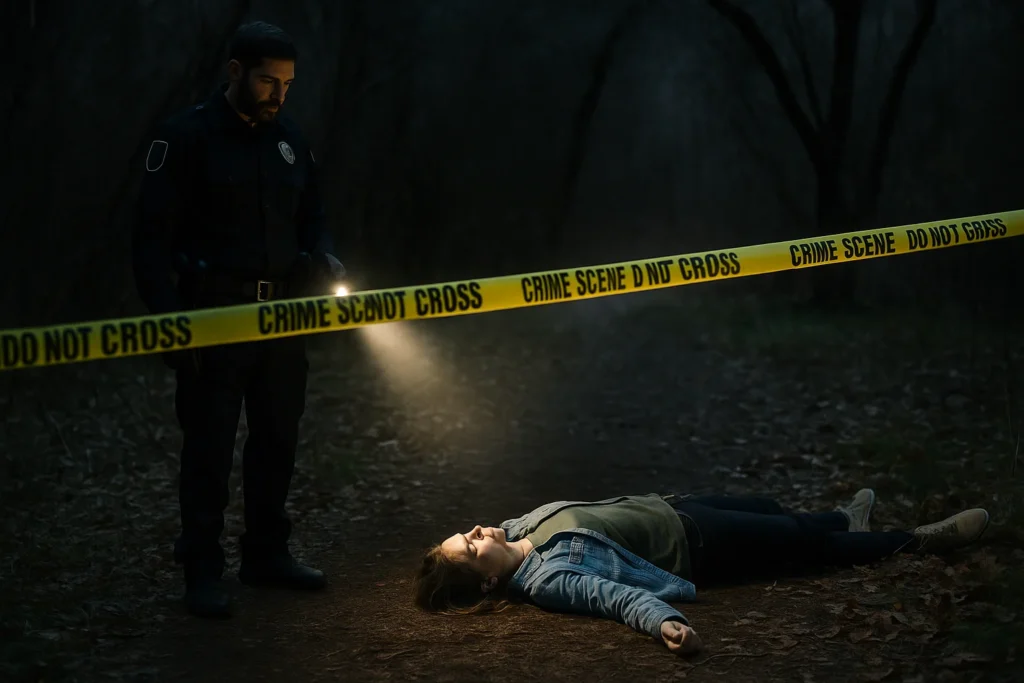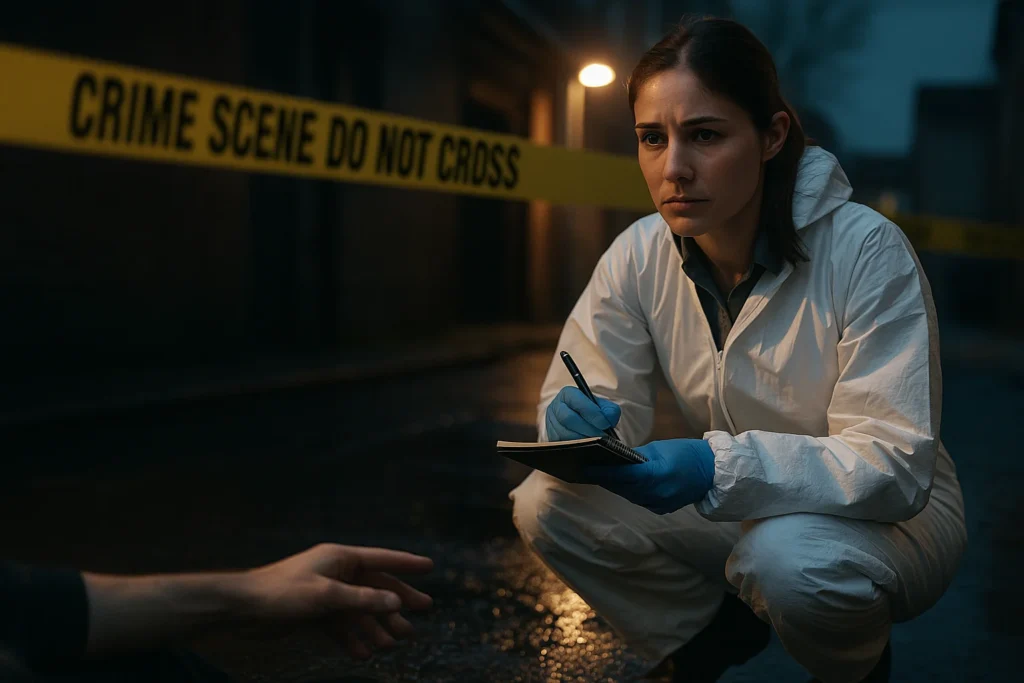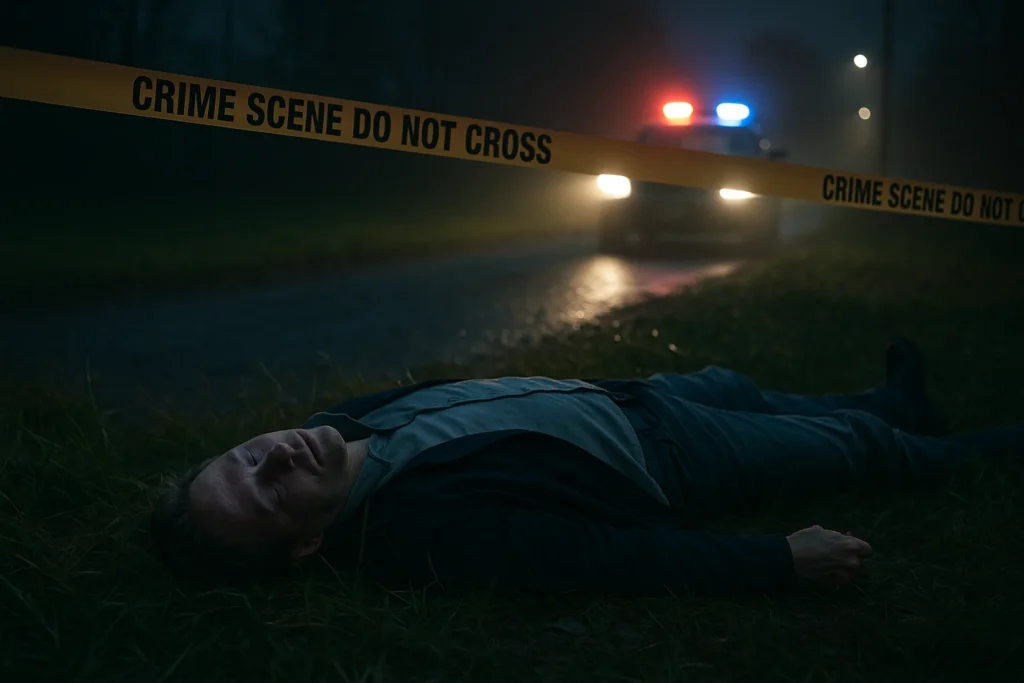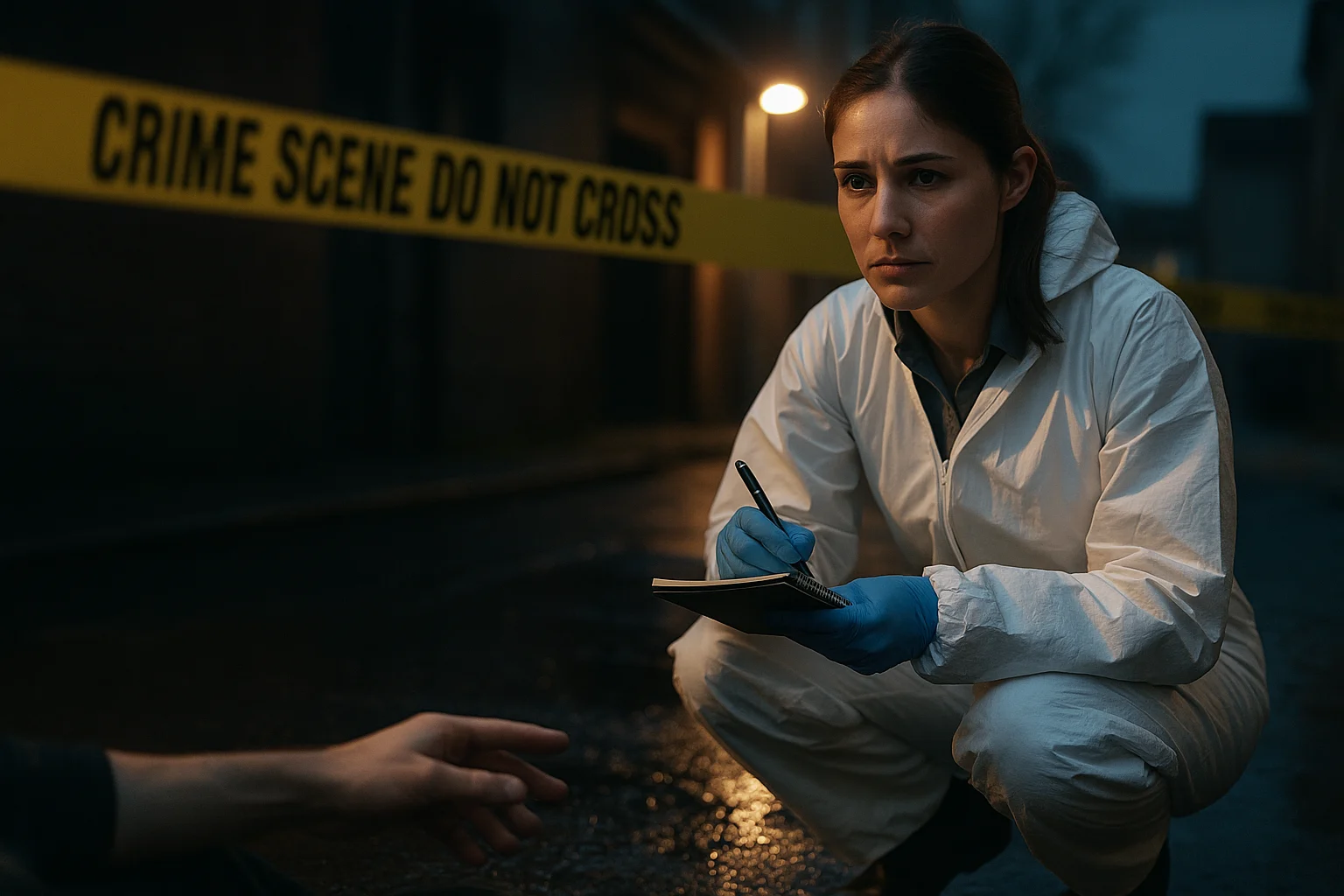
Some crimes leave behind more than just victims—they leave unanswered questions that haunt families and entire communities. Unsolved murders carry a chilling weight. With no arrests, no confessions, and no closure, fear lingers. Suspicion grows. Rumors take root and never go away. These cases don’t fade with time. Instead, they echo through cold case files, whispered conversations, and the hearts of those still waiting for justice.
The First Body in Briar Hollow
In October 1996, a hunter found the first victim. Her body lay in a shallow creek just outside Briar Hollow, a small Texas town where nothing violent had happened in decades. Locals knew each other. Doors stayed unlocked. Kids played until dark. That peace shattered the moment police arrived and confirmed foul play.
The victim was a 27-year-old waitress named Jenny Cruz. She had vanished two days earlier after her late shift. Her car sat abandoned behind the diner. The scene near the creek suggested a struggle. Police found bruises, defensive wounds, and rope fibers. They believed she had tried to fight back.
Despite initial efforts, the case stalled. No one had seen anything. Security cameras caught nothing. Leads dried up. People grew anxious.
A Pattern Begins
Eight months later, it happened again. Another woman, 31-year-old Lila Moore, disappeared after walking home from her friend’s house just three blocks away. Police found her body near the same creek, less than half a mile from where Jenny had been discovered. The similarities sent a wave of fear through the community.
This time, officers noticed more deliberate staging. The victim’s hands were tied the same way. Duct tape covered her mouth. Investigators believed the killer wanted them to know it wasn’t random. Still, they couldn’t find DNA, fingerprints, or tire tracks.
Locals began locking their doors. Businesses installed cameras. Women refused to walk alone. Still, no arrests followed. That second murder sat just as cold as the first.
The Lone Witness No One Believed
In 1999, police thought they had a break. A teenage boy named Kyle Jensen claimed he saw a man dragging a body near the creek late one night. He described a tall man wearing a green jacket, black gloves, and a ski mask. He even provided a license plate number.
But things unraveled quickly. The plate led nowhere. The timeline didn’t match. Investigators eventually dismissed Kyle’s statement, calling it unreliable. They never re-interviewed him. Years later, retired officers admitted they may have dropped the ball.
Kyle moved away. The trail grew cold again. The killer, whoever he was, disappeared just as quietly as he arrived.

The Case Reopens Two Decades Later
In 2018, a new sheriff took office. Sheriff Denise Rayburn had grown up in Briar Hollow. She remembered the fear, the funerals, and the way her mother clutched her hand tighter after each death. She ordered a full review of the case files.
Rayburn brought in modern forensic experts. They re-examined the rope fibers, pulled old case files, and used new testing methods unavailable in the late 90s. The sheriff believed someone in the town knew more than they had shared.
Soon, they found something strange. The same brand of rare duct tape used in both murders had also appeared in a robbery case three years later. The suspect in that robbery lived just two miles from the crime scene and had since moved out of state. He never faced murder charges.
Still, the evidence wasn’t enough to prosecute. The DNA results remained inconclusive. The suspect denied involvement, and the case never moved to court. Sheriff Rayburn couldn’t close the file. But her efforts reignited public interest.
The Town That Remembers
Locals still talk about Jenny and Lila. Their families attend memorials each year near the creek. New reporters visit the area hoping to uncover a twist or a new witness. Podcasts, online sleuths, and bloggers have all tried to crack the case. Some blame the original investigators. Others point fingers at known felons who passed through town.
Most agree on one thing. Someone got away with murder.
Parents still warn their children. Women still avoid that stretch of road. The town never fully recovered. The murders reshaped how people saw their neighbors and questioned the safety they once took for granted.

What Keeps This Case Alive
Cases like these don’t fade because people keep remembering. Technology keeps improving. Cold case teams revisit evidence with fresh eyes and updated tools. Journalists write about it. Residents share their memories. Even the smallest piece of information can breathe life into a stalled case.
The story of Jenny and Lila continues to spread. Students write papers about it. Crime buffs dig through old records. New investigators enter the force with the same file passed down again and again. Someone out there still hopes for justice.
Final Words on a Cold Case That Still Haunts
Unsolved murders don’t just shatter families—they leave lasting scars on entire communities. Fear lingers. Trust erodes. Grief hangs heavy in the air. In Briar Hollow, that pain is still fresh. Two women were found dead under eerily similar and violent circumstances. No one was ever held accountable.
This haunting case remains open, the file gathering dust as it waits for the missing piece that will bring the truth to light. Until that day comes, the quiet town of Briar Hollow will remember what happened by the creek—and wonder if justice will ever arrive.
Call us now at (281) 810-9760.

Other Related Articles
- Unsolved Murders: Seeking Answers in Cold Cases
- The Delphi Murders: A Quick Look Into The Ongoing Case
- Killer Justin Mohn Suddenly Murders Father Out Of Cold Blood
- The Criminal Process Guide
- Proof: Should Not be Convicted Without It
- Texas Affirmative Defense
- Understanding the Differences Between Felony and Misdemeanor Charges in Texas
- The Amazon Killer: Todd Kohlhepp
- The Gilgo Beach Murders: Tracing the Unsolved Serial Killings
- Ariel Castro Case: Unveiling the Horrors of Captivity
Texas Killing Fields FAQs
The Texas Killing Fields refers to a desolate area bordering the Calder Oil Field, which is notorious for the discovery of numerous bodies over the past few decades, many of which are unsolved murders.
Some of the victims of the Texas Killing Fields include Debbie Ackerman, Maria Johnson, Heidi Villareal Fye, Laura Miller, Audrey Lee Cook, and Donna Prudhomme.
Edward Harold Bell, William Reece, Robert Abel, and Clyde Hedrick have been considered suspects in the Texas Killing Fields cases, but many of the murders remain unsolved.
Laura Miller was a 16-year-old girl who disappeared in 1984 and was later found dead, becoming one of the tragic victims associated with the Texas Killing Fields.
Audrey Lee Cook was identified as one of the victims from the Texas Killing Fields after her remains were found in the area.



